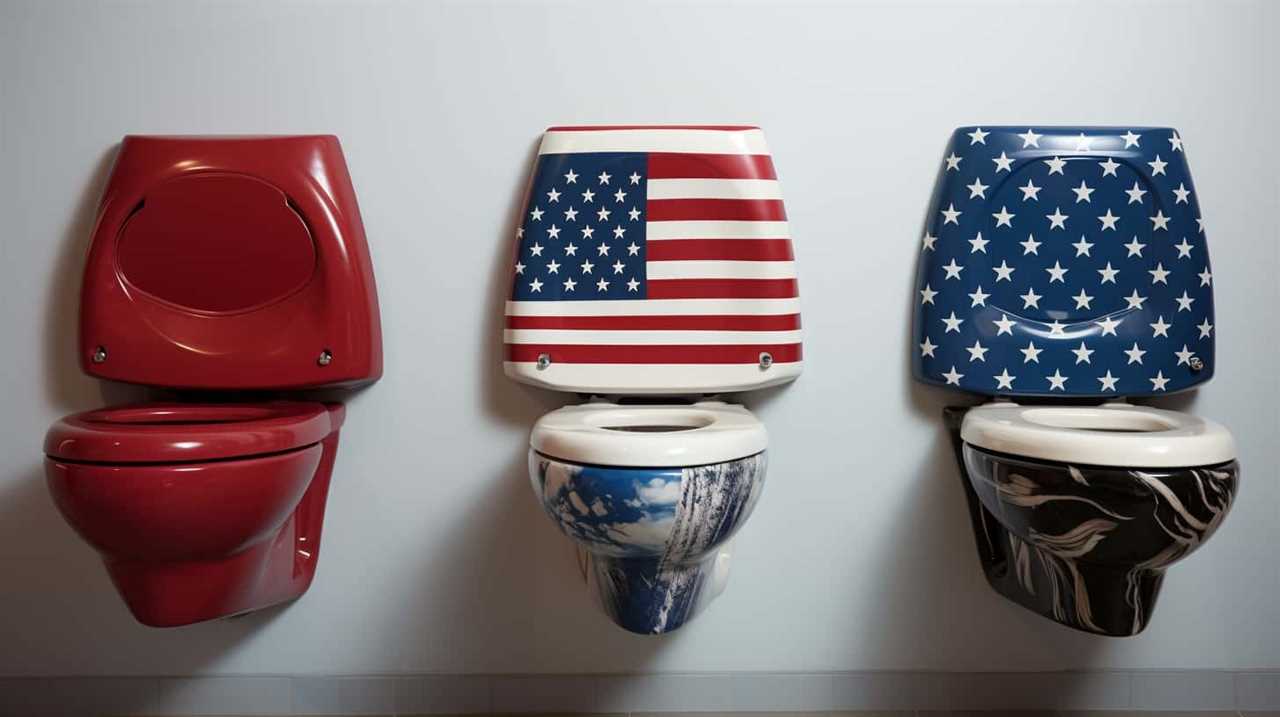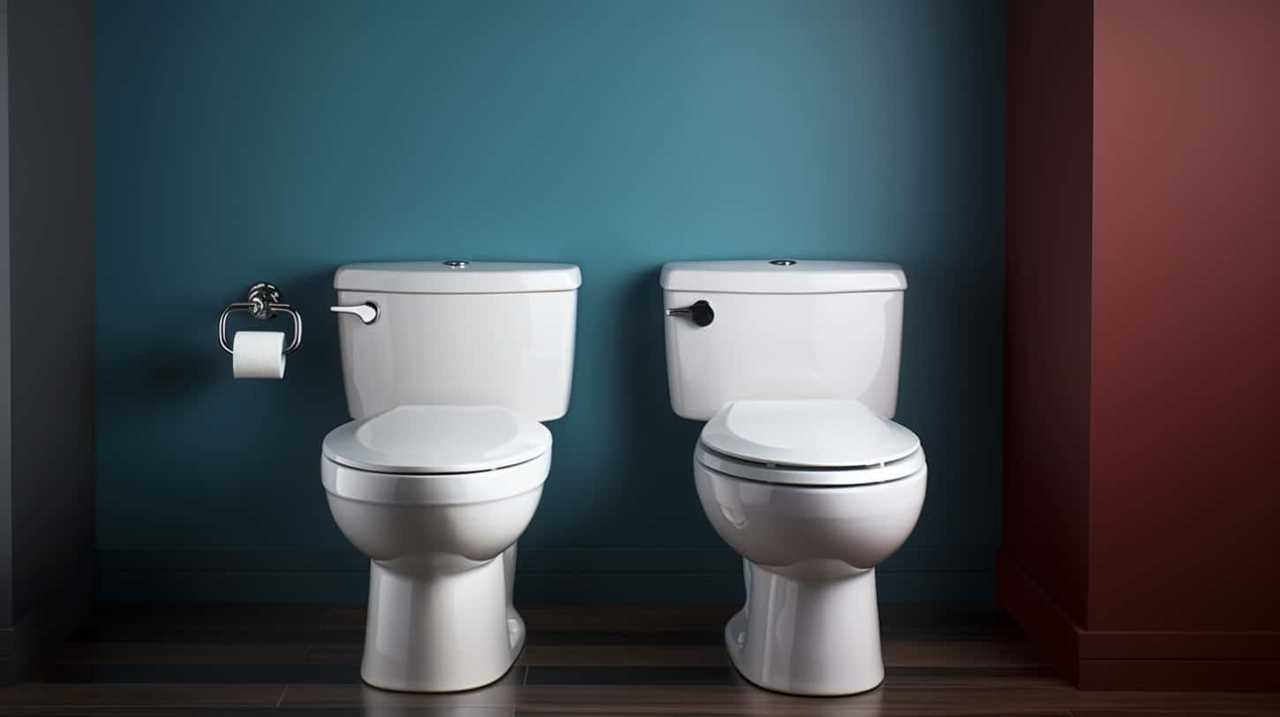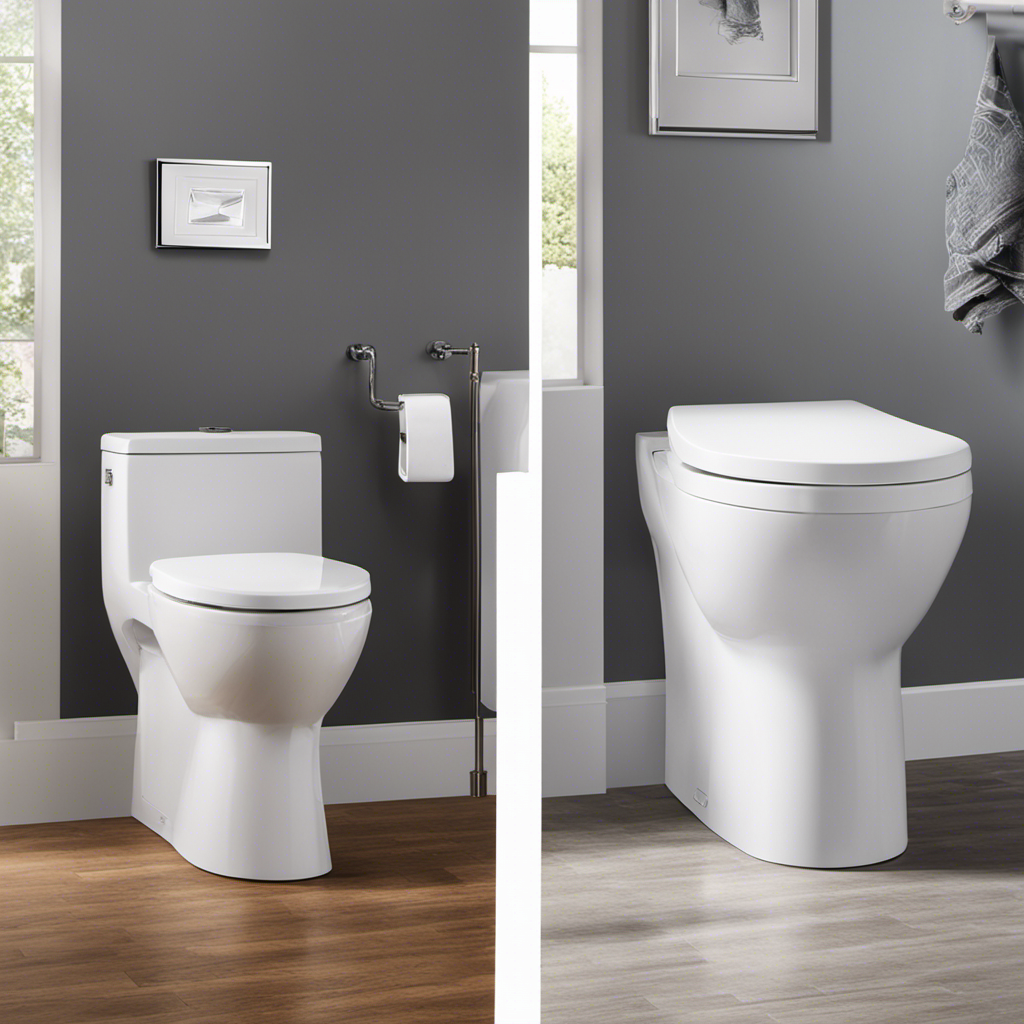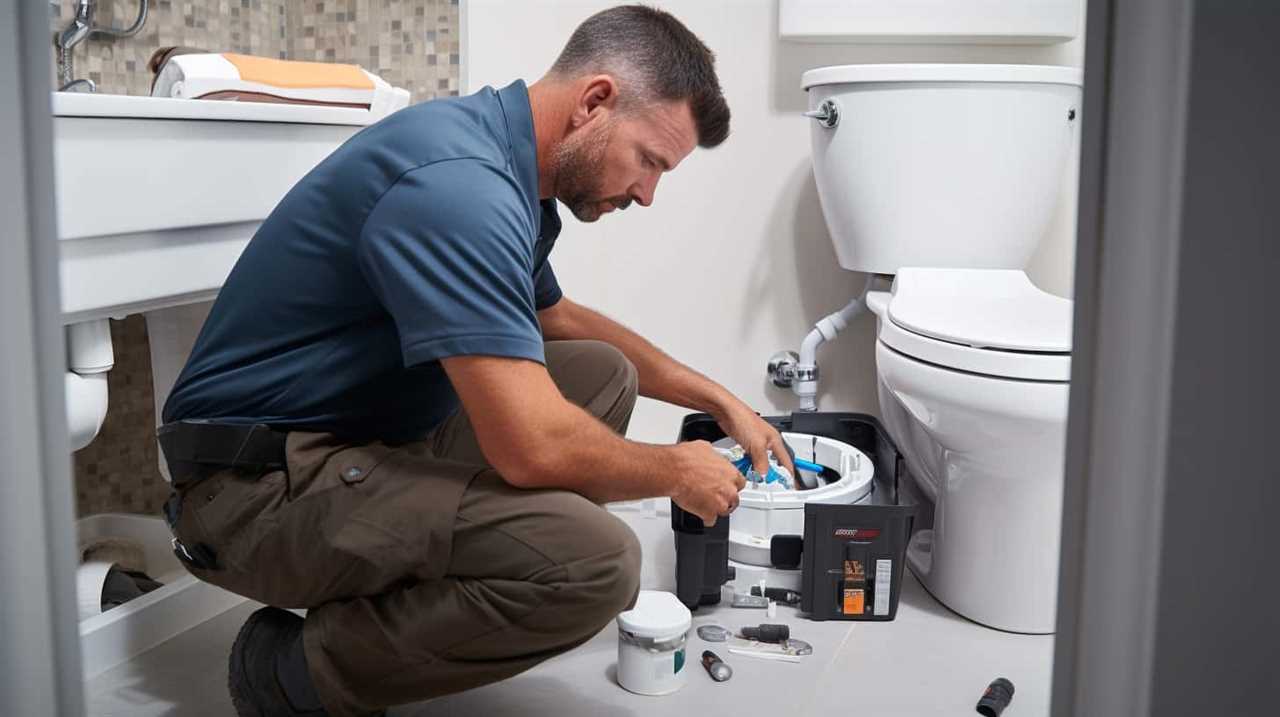Have you ever wondered why our toilets sometimes struggle to flush poop effectively? Well, fear not, for we have the answers you seek.
In this article, we will delve into the intricacies of toilet functionality and explore the possible reasons behind this less-than-ideal situation.
From clogged drainage systems to inadequate water pressure, we will uncover the mysteries that may be hindering your toilet’s flushing prowess.
Get ready to master the art of a powerful flush!

Key Takeaways
- Regular sewer line maintenance is essential to prevent clogs in the drainage system.
- Low water pressure can result in a weak flush and should be checked and addressed.
- Malfunctioning flapper or flush valve can cause weak flushes and should be properly maintained or replaced.
- Inadequate toilet bowl design can hinder effective flushing and should have a smooth, curved surface for optimal water movement and waste removal.
Clogged or Blocked Drainage System
One common reason for a toilet not being strong enough to flush poop is a clogged or blocked drainage system. The proper functioning of a toilet depends on the efficient flow of waste through the sewer line.
Regular sewer line maintenance is essential to prevent blockages and ensure smooth drainage. Over time, debris, grease, and other substances can accumulate in the sewer line, causing clogs that restrict the flow of waste.
To avoid this issue, it’s crucial to practice proper waste disposal. This includes not flushing items such as wipes, feminine hygiene products, or excessive amounts of toilet paper, as these can easily cause blockages. Additionally, avoiding the disposal of grease or oil down the drain is important, as they can solidify and obstruct the drainage system.
Regular maintenance and responsible waste disposal are key to preventing a clogged or blocked drainage system and maintaining a strong flushing toilet.

Insufficient Water Pressure
To continue our discussion on the reasons why a toilet may not be strong enough to flush poop, another potential cause could be insufficient water pressure.
Low water flow can result in a weak flush mechanism, making it difficult for the toilet to effectively clear the waste.
Insufficient water pressure can occur due to several factors. One common issue is a partially closed water supply valve, which restricts the flow of water into the toilet tank. Another possible cause is a clogged or blocked water line, hindering the water pressure from reaching the toilet. Additionally, outdated plumbing systems or problems with the municipal water supply can also contribute to low water pressure.
To address this issue, it’s important to:
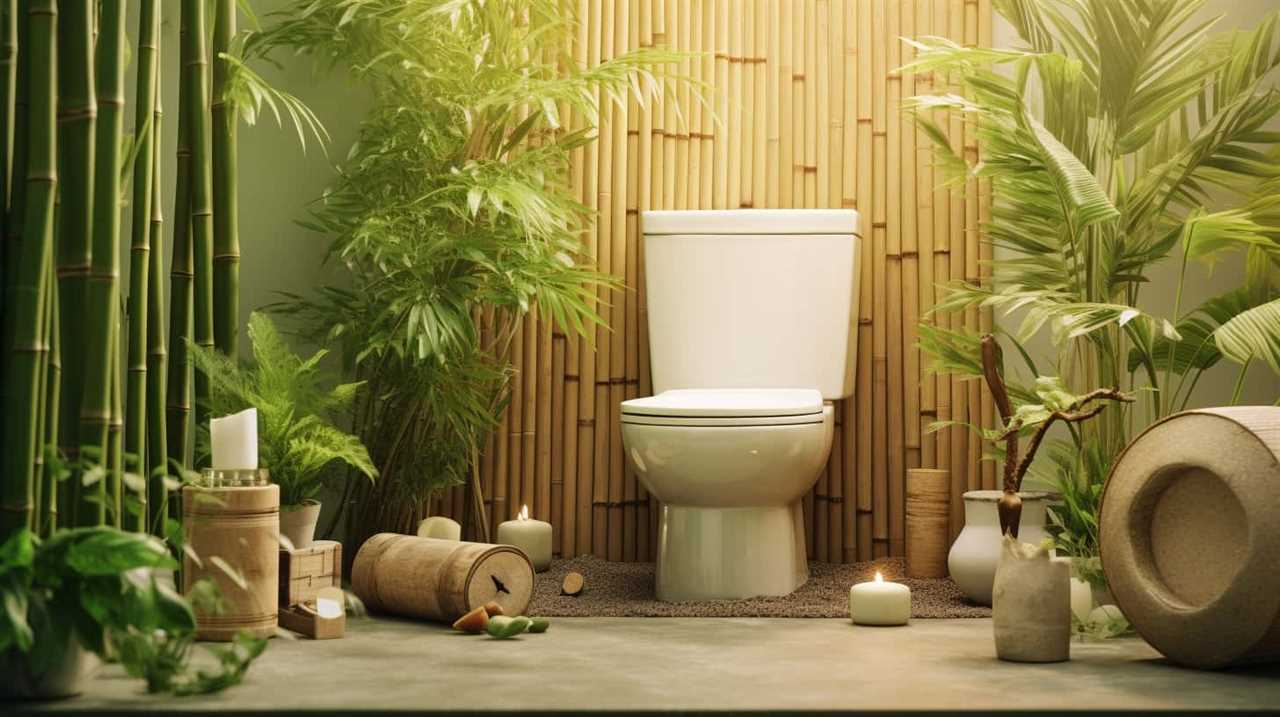
- Check the water supply valve
- Clear any clogs in the water line
- Consider contacting a plumber to evaluate and improve the water pressure in your home.
Malfunctioning Flapper or Flush Valve
Now that we have addressed the potential issue of insufficient water pressure, let’s examine another possible cause for a toilet not being strong enough to flush poop: a malfunctioning flapper or flush valve. The flapper and flush valve are essential components of a toilet’s flushing mechanism. The flapper is a rubber or plastic seal that covers the flush valve, preventing water from flowing into the bowl until the flush lever is pressed. When the flapper is worn or damaged, it may not create a tight seal, resulting in weak flushes. Replacing the flapper can often solve this problem. Regular maintenance, such as cleaning the flapper and flush valve, can also prevent issues. Here are some maintenance tips for flapper replacement:
| Flapper Replacement Tips |
|---|
| Turn off the water supply to the toilet. |
| Drain the tank by flushing the toilet. |
| Remove the old flapper by disconnecting it from the flush valve. |
| Install the new flapper by attaching it to the flush valve. |
| Turn on the water supply and test the flush. |
Inadequate Toilet Bowl Design
Because of its inadequate design, the toilet bowl may not have enough force to effectively flush solid waste. The poor flushing mechanism and inadequate bowl shape contribute to this issue. Let’s dive into the details.
Firstly, a poor flushing mechanism can greatly impact the toilet’s ability to flush efficiently. If the flushing mechanism isn’t powerful enough, it may not generate sufficient water flow and pressure to effectively remove solid waste from the bowl. This can result in incomplete flushing and leave residue behind.
Additionally, the bowl shape plays a crucial role in the flushing process. An inadequate bowl shape can hinder the flow of water, making it difficult for the waste to be effectively carried away. A properly designed bowl should have a smooth, curved surface that allows for optimal water movement and waste removal.

Old or Outdated Plumbing System
Our old plumbing system can significantly impact the strength of our toilet flush. Over time, pipes can become rusty and plumbing can become corroded, leading to reduced water flow and decreased flushing power. Rusty pipes can accumulate mineral deposits, causing blockages and reducing water pressure. Corroded plumbing can result in leaks and weakened pipe connections, further hindering the effectiveness of the toilet flush.
It’s important to address these issues in order to maintain optimal toilet performance. Regular inspection and maintenance of the plumbing system is crucial to identify and fix any problems, such as replacing rusted pipes or corroded plumbing components. By ensuring that our plumbing is in good condition, we can improve the strength and efficiency of our toilet flush.
Frequently Asked Questions
How Can I Determine if My Toilet Has a Clogged or Blocked Drainage System?
To determine if our toilet has a clogged or blocked drainage system, we can troubleshoot the weak flush. By checking for any visible obstructions in the toilet bowl or using a plunger, we can identify and address the issue.
What Are Some Common Signs of Low Water Pressure in a Toilet?
Common causes of low water pressure in a toilet include clogged pipes, a malfunctioning fill valve, or a faulty water supply line. Troubleshooting tips involve checking for blockages, adjusting the fill valve, and ensuring proper water flow.

How Can I Fix a Malfunctioning Flapper or Flush Valve in My Toilet?
To fix a malfunctioning flapper or flush valve in a toilet, we need to ensure the toilet tank’s water level is correct. Adjusting the flapper or replacing the flush valve can resolve the issue and restore proper flushing power.
What Aspects of Toilet Bowl Design Can Contribute to Inadequate Flushing Power?
Inadequate flushing power in a toilet can be influenced by various factors. Toilet bowl design, such as the size and shape, can impact the force of the flush. Other crucial aspects include proper toilet bowl cleaning and maintaining the correct water level.
When Should I Consider Updating My Plumbing System to Improve Toilet Flushing Performance?
When upgrading plumbing, it’s important to consider signs of poor toilet performance. If your toilet isn’t strong enough to flush poop, it might be time to update your plumbing system for improved flushing power.
Conclusion
In conclusion, if you’re experiencing a weak flushing toilet, it may be due to various factors such as:

- A clogged drainage system
- Insufficient water pressure
- A malfunctioning flapper or flush valve
- Inadequate toilet bowl design
- An old plumbing system
Interestingly, studies have shown that around 70% of toilet flushing issues can be attributed to clogged or blocked drainage systems.
It’s important to address these issues promptly to ensure proper toilet functionality.
